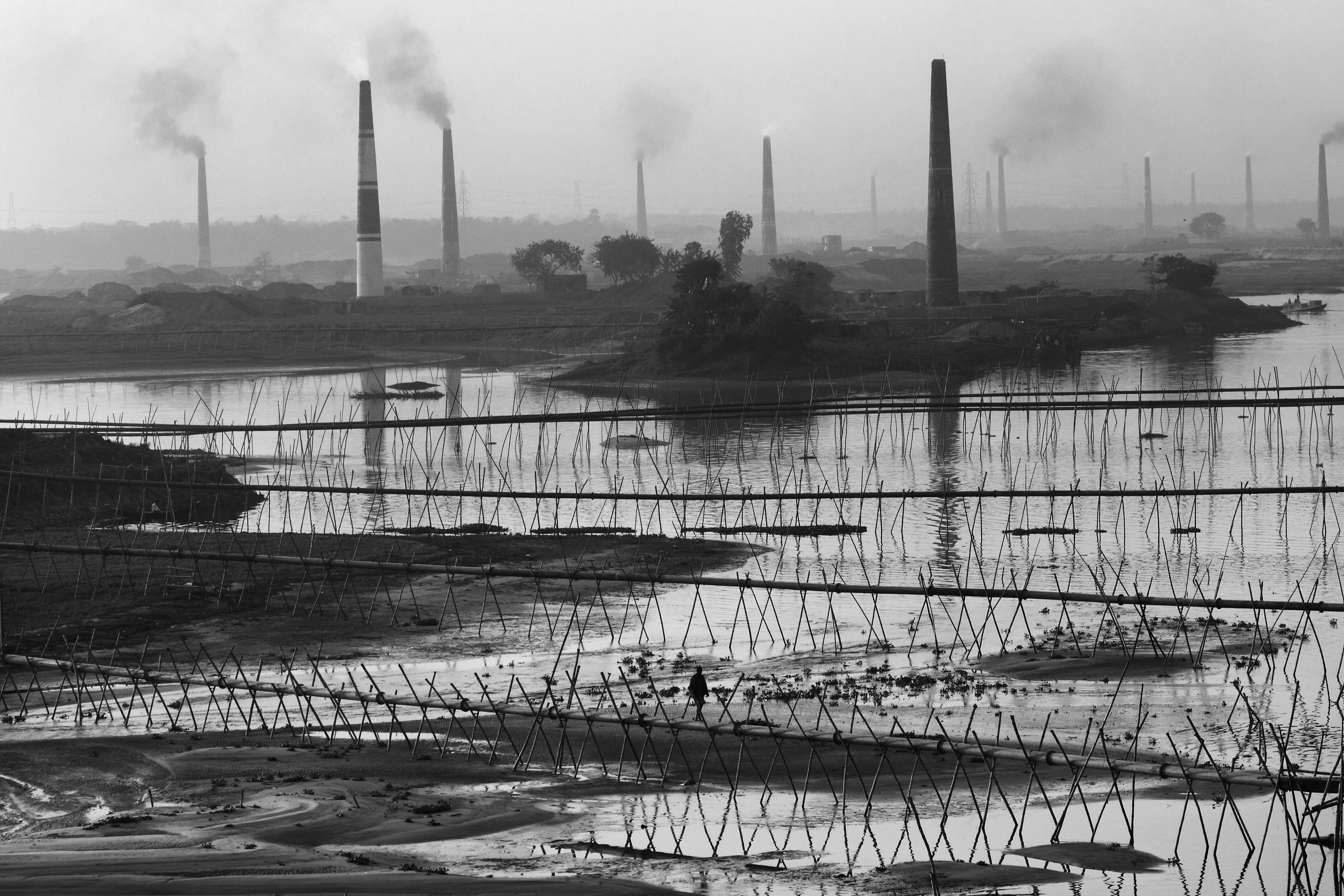If you have hard water in your home, a water softener is an essential appliance to help reduce levels of calcium and magnesium in your water. However, it is also important to consider the use of a carbon filter with your water softener. Carbon filters are effective at removing a range of contaminants from your water including chlorine, sediment, and other organic compounds. By using both a water softener and carbon filter together, you can ensure that your home’s drinking water is free from harmful substances while still providing the benefits of softened water. This article will discuss the advantages of using a carbon filter with your water softener.A carbon filter is a type of filter that uses activated carbon to remove contaminants from air or water. It works by adsorbing pollutants onto the surface of the activated carbon, which can include bacteria, chemicals, odors, and other particles. Carbon filters can be used in a variety of applications including air purifiers, water filtration systems, and aquarium filters. They are an effective way to remove impurities and improve air and water quality. They are also economical compared to other filtration methods.
How Does A Carbon Filter Work With A Water Softener?
A carbon filter is a filtration system that removes impurities from water by using activated carbon. Activated carbon is a form of charcoal which has been treated to increase its absorbency. It is commonly used in water softening systems to remove chlorine, sediment, and other impurities from water. When used in combination with a water softener, a carbon filter can help reduce hardness and improve the taste and odor of your drinking water.
The carbon filter works by passing the incoming water through the activated carbon bed. The activated carbon acts like a magnet, attracting and trapping the impurities as they pass through the filter. As more impurities are removed, the carbon bed becomes saturated and needs to be replaced. The frequency of replacement depends on the amount of contaminants present in your incoming water supply.
When used in combination with a water softener, a carbon filter can provide additional benefits such as reducing unpleasant odors and tastes caused by chlorine or other contaminants in your drinking water. Additionally, it can help remove sediment from your incoming water supply which can help extend the life of your softener system.
Overall, using a combination of a carbon filter and a water softener is an effective way to soften hard water while simultaneously improving its taste and odor. By removing chlorine, sediment, and other contaminants from your drinking water you can ensure that you’re getting clean, safe drinking water for you and your family.
What Are The Benefits Of A Carbon Filter With Water Softener?
A carbon filter with water softener is a great way to ensure that your drinking water is clean and safe. Carbon filters work to remove impurities from the water, including chlorine, sediment, and bacteria. By removing these impurities, you can help protect your health and reduce the amount of toxins in your drinking water. Additionally, a carbon filter with water softener can reduce the amount of scale buildup in plumbing fixtures and appliances that use softened water. This helps to extend the life of your pipes and appliances while also reducing energy costs associated with running them.
Other benefits of a carbon filter with water softener include improved taste and odor, as well as improved clarity in the water. This can be especially important for those who are sensitive to particular tastes or odors that may be present in untreated water. By filtering out these impurities, you can enjoy a better-tasting drinking experience every time you turn on the tap. Additionally, carbon filters may also help remove heavy metals from drinking water, making it even safer for consumption.
Overall, using a carbon filter with a water softener is a great way to improve the quality of your drinking water while also protecting your health and saving money in energy costs associated with running plumbing fixtures and appliances.
Types of Carbon Filters for Water Softener
Carbon filters are often used in water softeners to reduce the presence of impurities and contaminants. These types of filters can be used in a variety of ways, depending on the specific needs of the user. There are three main types of carbon filters for water softener systems: activated carbon, granular activated carbon, and catalytic carbon.
Activated Carbon
Activated carbon is a type of filter that is designed to remove particles from water that are too small for other filtration systems to capture. It has a high porosity, which allows it to absorb a wide range of impurities and contaminants from the water. Activated carbon can be used as a stand-alone filter or in combination with other filter media, such as ion exchange resins or reverse osmosis membranes.
Granular Activated Carbon
Granular activated carbon (GAC) is similar to regular activated carbon but has a much larger surface area and more porous structure. This makes it ideal for removing organic compounds, chlorine, and other chemicals from water. It is often used in combination with other filtration media such as sediment filters or ion exchange resins to provide more thorough filtration and ensure that no impurities are left behind.
Catalytic Carbon
Catalytic carbon is an advanced type of filter that uses catalysts to break down organic compounds into smaller molecules that can be more easily removed by other filtration systems. This makes it ideal for removing trace amounts of pharmaceuticals, pesticides, and even industrial pollutants from water sources. It is often used as an additional layer of protection after other filtration media have been used to ensure that all impurities have been removed before the water reaches its end destination.
Different Sizes of Carbon Filters Available for Water Softener
Carbon filters are an essential part of any water softener system. They are used to reduce the levels of chlorine, sediment, and other contaminants in water to make it safe for drinking. Carbon filters come in a variety of sizes and types to suit different needs. The most common types of carbon filters available for water softeners are granular activated carbon (GAC) and solid block carbon (SBC).
Granular activated carbon is the most common type of filter used in home water softening systems. It is made up of small particles that can absorb contaminants from the water, such as chlorine, sediment, and other impurities. The size of GAC filters range from 0.5 microns to 10 microns, with larger sizes being more effective at removing impurities.
Solid block carbon (SBC) filters are larger than GAC filters and usually come in sizes ranging from 10 microns to 50 microns. These filters are effective at removing a wider range of contaminants than GAC, including VOCs (volatile organic compounds), lead, mercury, pesticides, and herbicides.
The size of the filter needed will depend on the type and amount of contaminants present in the water supply. A larger filter may be necessary if there is a large amount of sediment or other contaminants present in the water supply. It is important to choose a filter that is capable of removing all types of impurities from your water supply for optimal performance.

Installing a Carbon Filter with a Water Softener
Installing a carbon filter with a water softener is an effective way to improve the quality of your water. A carbon filter helps remove contaminants from the water, such as chlorine and other chemicals, before it enters your home. Installing a carbon filter with your water softener can help reduce unpleasant tastes and odors, as well as make your water safer to drink. Here are some tips to help you install a carbon filter with your water softener:
1. Start by determining the size of the filter you need. You will need to choose one that is compatible with your water softener system. Most filters come in a variety of sizes, so you should be able to find one that fits your needs.
2. Once you have determined the size of the filter you need, purchase it from your local hardware store or online retailer. Make sure that all of the parts are included in the kit and that they are compatible with each other and your existing system.
3. Install the carbon filter according to the manufacturer’s instructions. This may involve attaching it to an existing pipe or running additional pipes for it from your main line. If you are unsure about how to do this, consult a professional plumber for assistance.
4. Once installed, flush out any impurities in the system by running cold water through it for several minutes until clear water comes out of the tap or faucet connected to it.
5. Test the system periodically for optimal performance by checking for any unpleasant odors or tastes in the water coming through it. Additionally, check for any build-up on fixtures connected to it or on any dishes washed using its outputwater stream periodically by holding them up against bright light and looking closely at them for signs of discoloration or staining caused by impurities such as iron or manganese in the water stream coming through it .
By following these steps, you can ensure that your carbon filter is installed properly and working correctly so that you can enjoy clean and safe drinking water every day!
How Often Should You Change A Carbon Filter With Your Water Softener?
Replacing the carbon filter in your water softener system should be done on a regular basis. Depending on how much water you use and the size of your system, it is recommended to change the filter every six months. It is important to keep the filter clean as it will help maintain the efficiency of your water softener and ensure that you are getting clean, high-quality water.
If you notice a decrease in water flow throughout your system, this is an indication that your carbon filter is clogged and needs to be replaced. To ensure that your filter is working properly, you should check it regularly for signs of wear and tear. If you find that the filter is beginning to wear out, it may be time to replace it with a new one.
In addition to changing the carbon filter in your water softener system, it is also important to check other components of the system on a regular basis. This includes checking the brine tank for any buildup of salt or other minerals, as well as cleaning out any loose sediment or debris from inside the tank itself. Cleaning out these areas will help ensure that your water softener system works efficiently and prevents problems from occurring in the future.
Finally, if you are unsure about when or how often you should change a carbon filter with your water softener, it is always best to consult with a professional who can provide advice and assistance on maintaining the system properly. Doing so will help keep your system running smoothly and efficiently while also ensuring that you are getting clean, high-quality water for years to come.
Are There Any Alternatives To Using A Carbon Filter With My Water Softener?
One of the most popular ways to treat hard water is through the use of a water softener, which uses a process called ion exchange to reduce the concentration of minerals like calcium and magnesium. However, many people are unaware that carbon filters can also be used in conjunction with their water softener to help improve the taste and smell of their water. While carbon filters are a great option for improving the quality of drinking water, there are other alternatives available for those who want to avoid using them.
One such alternative is reverse osmosis (RO), which is a process that uses pressure to force water through a membrane that removes impurities, including minerals like calcium and magnesium. This type of filtration system is often more effective at removing impurities than a carbon filter, although it’s also more expensive to install and maintain.
Another option is an ultraviolet (UV) light system, which uses UV rays to kill bacteria and other microorganisms in your home’s water supply. This type of system is relatively affordable and can be used on its own or in conjunction with other filtration systems. However, it should be noted that UV systems do not remove minerals like calcium or magnesium from your water supply.
Finally, chlorination has been used for decades as an effective way to disinfect drinking water in homes and businesses alike. Chlorination involves adding chlorine or chloramine to kill bacteria and viruses in the water supply; however, it does not remove any minerals from your water supply either.
In conclusion, while carbon filters are one of the most popular ways to improve the taste and smell of drinking water in homes with hard water supplies, there are several alternatives available as well. Reverse osmosis systems offer better removal of impurities but may cost more upfront; ultraviolet light systems can be used on their own or with other filtration systems but do not remove minerals; and finally chlorination has been used for decades to disinfect drinking water but does not remove minerals either.

Conclusion
A carbon filter may be necessary if you want to improve the taste and odor of your water. If you have hard water, a water softener is necessary to protect your appliances and plumbing from limescale buildup. While a carbon filter can help improve the quality of your water, it is not essential for the functioning of a water softener. It is important to assess the specific needs of your home and determine whether a carbon filter is right for you.
Ultimately, the decision to install a carbon filter with your water softener depends on what kind of contaminants are present in your home’s water supply and how much you are willing to invest in improving its quality. We hope that this article has provided you with enough information to make an informed decision about whether or not you need a carbon filter with your water softener.

